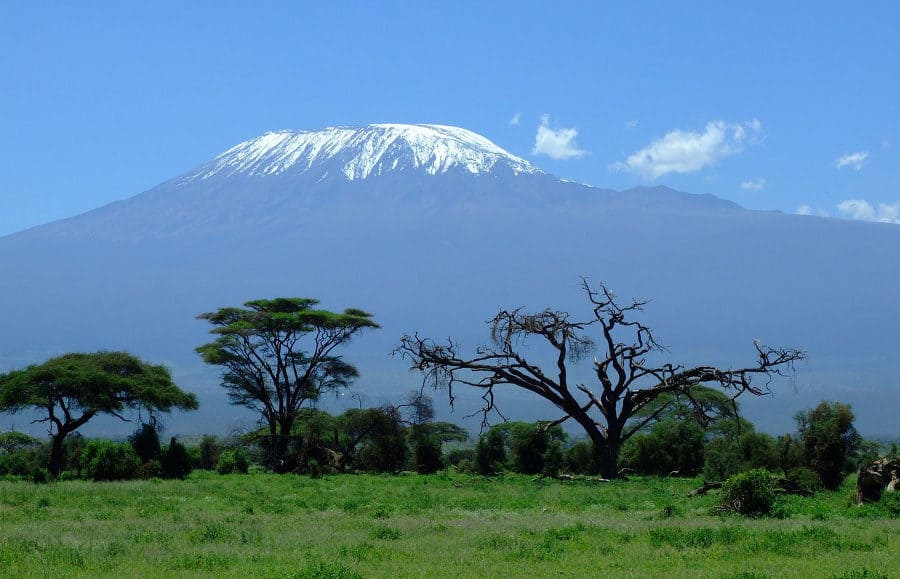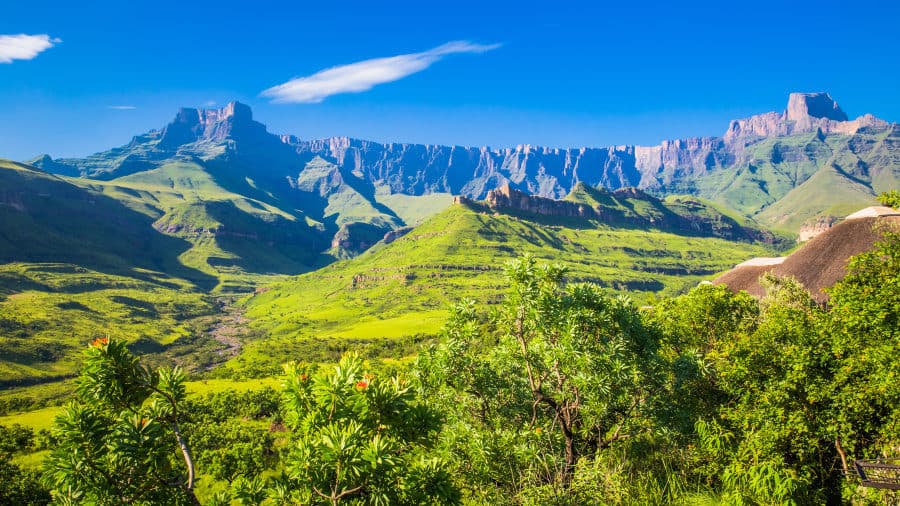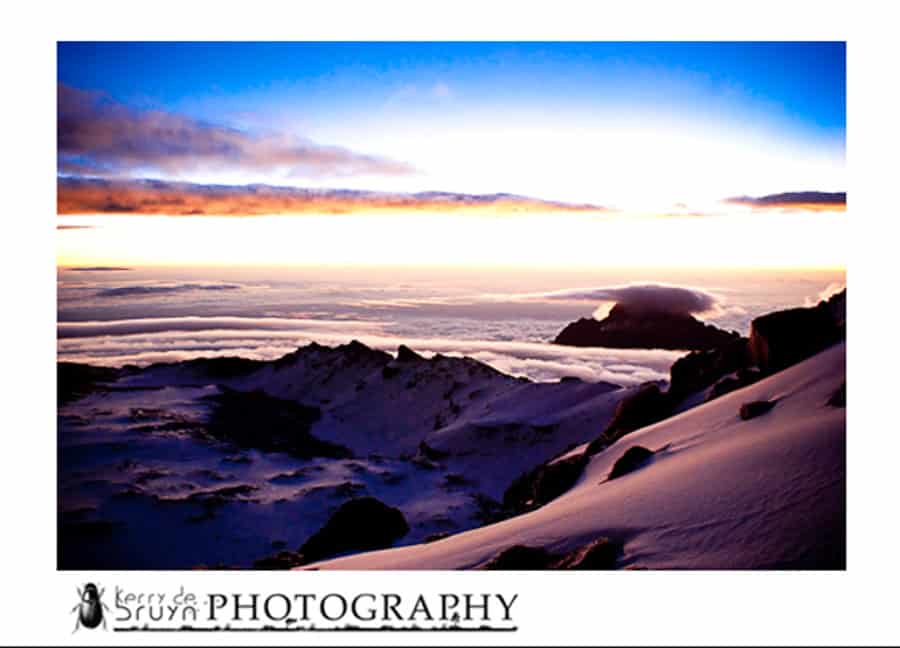Mount Kenya is Africa’s second-tallest mountain, reaching an impressive height of 5,199 meters. It’s beaten only by Mount Kilimanjaro which peaks at 5,895 meters.
Known as a ‘holy place’ by local communities, Mount Kenya amazes all who lay eyes on it. After one glance at its jagged peaks, you’ll also be awestruck.
As the tallest mountain in Kenya, many people think that the glorious landform got its name from its homeland, but the opposite is true. The country of Kenya was named after the mountain.
While Kenya is largely known for unforgettable safari experiences, Mt Kenya is also a key attraction. If you’re planning to ascend the renowned Kenyan mountain, then there are a few things to know in preparation.
This guide will tell you all that you need to know about the mountain, the various routes that you can take and other interesting facts.
Mt. Kenya at a Glance

Before we dive into the different routes available up the mountain, here are a few essential pieces of information to better acquaint you with your next challenge.
Where is Mount Kenya?
In case the name doesn’t give it away, Mount Kenya can be found in Kenya, Africa, directly south of the equator. The nearest major city to the base is Nairobi, which is approximately 138 kilometers away.
There are smaller settlements much closer, such as Kabaru and Kamweti, located within Mount Kenya National Park and offer convenient accommodation options.
Is Mount Kenya extinct?
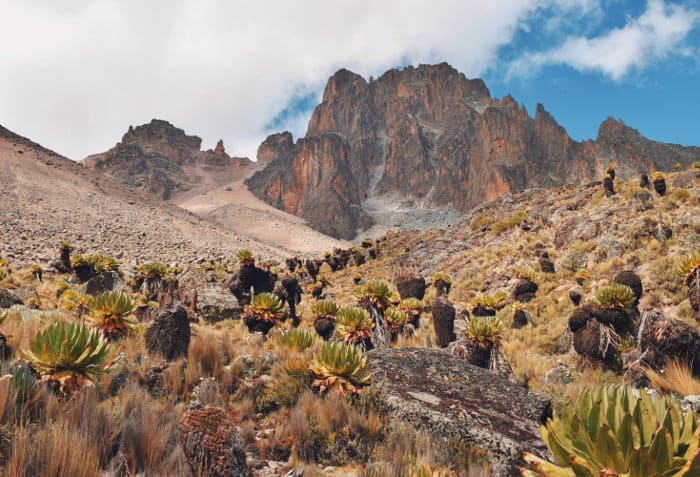
The shape of the great mountain was formed from its previous volcanic activities. Mount Kenya is a stratovolcano that experienced its last eruption between 2.6 and 3.1 million years ago.
Today, Mount Kenya is extinct and the national park is honored as a UNESCO World Heritage Site.
How many peaks does Mount Kenya have?
The mountain has three peaks, namely Batian (5,199 meters), Nelion (5,188 meters) and Point Lenana (4,985 meters).
How high is Mount Kenya?
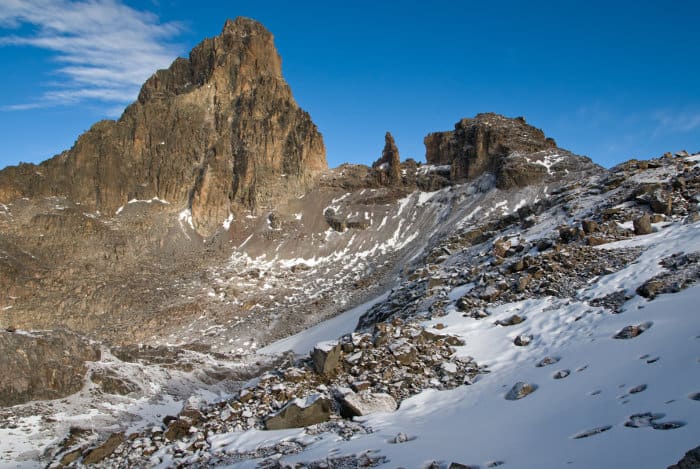
Mount Kenya’s elevation reaches a neck-tilting 5,199 meters, making it the highest mountain in Kenya, and the second-highest in Africa. The intense altitude can make hiking the peak quite challenging, and you need to prepare properly before attempting the climb.
Can you hike Mount Kenya?
It’s possible to hike all three of the mountain’s peaks. The difficulty of the expeditions ranges from medium-difficult to climb Point Lenana peak to a very technical and challenging summit of Batian.
So you better get training!
All You Need to Know About Climbing Mount Kenya

Successfully ascending Mount Kenya is a tale that you will tell for days to come. However, to arrive home victorious, it’s necessary to put in the preparation and research. Here’s all you need to know about the climb.
Preparation to climb
Whether you’re an experienced hiker or a rookie, it’s important to ensure that you’ve prepared adequately for a challenging hike. From picking the right boots to refining your backpack essentials.
Another essential area of preparation is fitness and training. Although Point Lenana doesn’t require any technical experience, the ascent is not for the faint-hearted. A high level of fitness is needed.
How to get to Mount Kenya

The easiest way to get to the tallest mountain in Kenya is to fly to Nairobi. From Nairobi, you can choose between Nanyuki or Naro Moru to access the main road. There is also a wide variety of trekking companies that offer transfers to the park.
There are six main entrances into Mt Kenya National Park, all of which charge an entrance fee of $52 per day for non-residents.
Budget to climb Mount Kenya
The cost of the climb will fluctuate depending on whether or not you choose to have a guide. As well as how long it takes to complete your route.
As a guideline, you can expect to budget for the following costs (excluding costs getting to Nairobi):
- Visa and insurance – $300
- Equipment (either purchase or rent) – $200
- Guide package (depending on provider and inclusions) – $800
- Tips – $100
- Miscellaneous such as food, additional accommodation, etc. – $300
Overall, it can cost a pretty penny to summit the peak, so better make sure that you prepare wisely.
Guide or no guide?

It is possible to enjoy the experience in a self-guided fashion. However, unless you are very experienced and well-acquainted with the route, a guide is recommended.
If you’re on the fence, keep in mind that the guides are mostly from the local community. Choosing to use the services of the guide will be giving back to the locals that care for the area.
Gear for climbing Mount Kenya
While you can easily climb Table Mountain and the likes without any special equipment, Mount Kenya is a different kettle of fish. Although very near the equator, Mount Kenya reaches high altitudes – making for icy conditions.
To be properly prepared, you need to pack suitable sleeping gear, protective thermal layers, and fleeces. During the rainy seasons, the trail can become muddy so proper hiking boots are essential. The rainy seasons run from March to June, and October to December.
Technical gear such as trekking poles, harnesses, helmets, crampons, and ice axes also need to be included for the challenging routes.
How long does it take to climb Mount Kenya?

Due to the difficulty of the route and the extent of the altitude, it will take a minimum of four days to summit the peak of Point Lenana – the most popular route.
Seasoned hikers that choose to tackle Batian and Nelion can expect to take a few days longer to reach the top. However, these peaks are only for experienced hikers and technical equipment is required.
Climbing Routes
As if the beauty of the Kenyan landscape and the exhilaration of completing a hike is not enough, you also have a choice of routes to take.
The following three routes are the most popular. Many expeditions combine routes for ascent and descent.
Sirimon
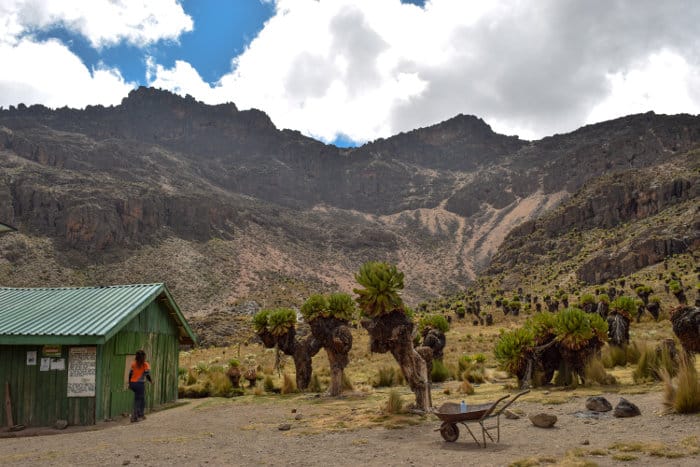
Arguably the most beautiful route, and the driest, following Sirimon will lead you on a steady path up the northern side of the central peaks. This route takes approximately four to five days to complete.
There are two camps along the way, namely Old Moses (3300 meters) and Shipton’s Camp (4200 meters). The track covers 15 kilometers from Nanyuki town and has ample water stops along the way.
Burguet
The Burguet route has plenty of advantages, such as the tropical rainforest at the start of the route, the sense of vast wilderness, and a choice of huts to stay in along the way. However, the route is the most challenging, requiring skilled navigation to get through the wild landscape.
The total trek will take you approximately seven days, and choosing a different route for the descent is recommended. If you want a true bonding experience with Kenya’s natural elements, then this is the route for you.
Naro Moru
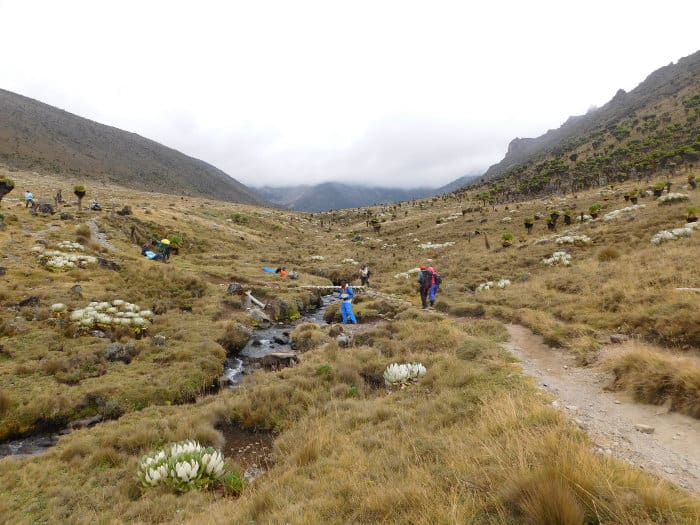
Naro Moru is often described in two words – “short” and “direct”. As the most popular route, it can get quite busy – especially on the descent. Expect to encounter beautiful plant life as you trek through Teleki Valley.
Be prepared for the ‘Vertical Bog’ which is a waterlogged section on the trail. The steep, marshy section is very tricky and can take a couple of hours to get through. The total trek will take roughly four days.
Interesting Mount Kenya Facts
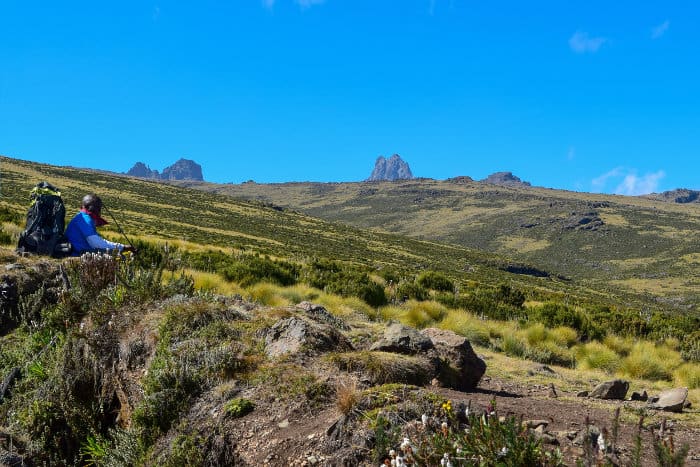
- Mount Kenya welcomes an average of 15,000 trek-loving visitors every year.
- The tall mountain used to be even taller at around 7,000 meters before glaciation occurred.
- The mountain is a sacred symbol for local Kenyans.
- Although smaller than Mount Kilimanjaro, Mt Kenya is considered to be a more difficult climb from a technical perspective.
- Mount Kenya has an incredibly diverse ecosystem with more than 300 species of birds and rich volcanic soil.
Other Mountains in Kenya

It’s tough to compete with a mountain as majestic as Mt Kenya. However, the country is also home to several other peaks that are worth a visit (and a trek). Here are three of them.
- Mount Elgon, also an extinct volcano, lies on Kenya’s border with Uganda. The tallest Wagagai peak reaches 4,321 meters.
- Peaking at 3,906 meters, Mount Kinangop is in Aberdare National Park. Open moorlands, tussock grass, and bamboo forests surround the rough and rocky peak.
- Mount Mtelo’s height is 3,336 meters, making it the fifth tallest mountain in the country. The beauty of the peak and the surrounding area make it a top spot to explore.
Mount Kenya Calls – So Lace Up Your Boots

Kenya is full of hidden gems, and while Mt Kenya is certainly not hidden, it is a treasure in its own right. If you’re an experienced hiker or a trekking-enthusiast with a high level of fitness, then summiting Mount Kenya should be on the top of your bucket list.
If you live for the moments of ascending a peak and soaking in the marvellous view from the top (as you catch your breath), then Mt Kenya is an expedition that shouldn’t be missed.

